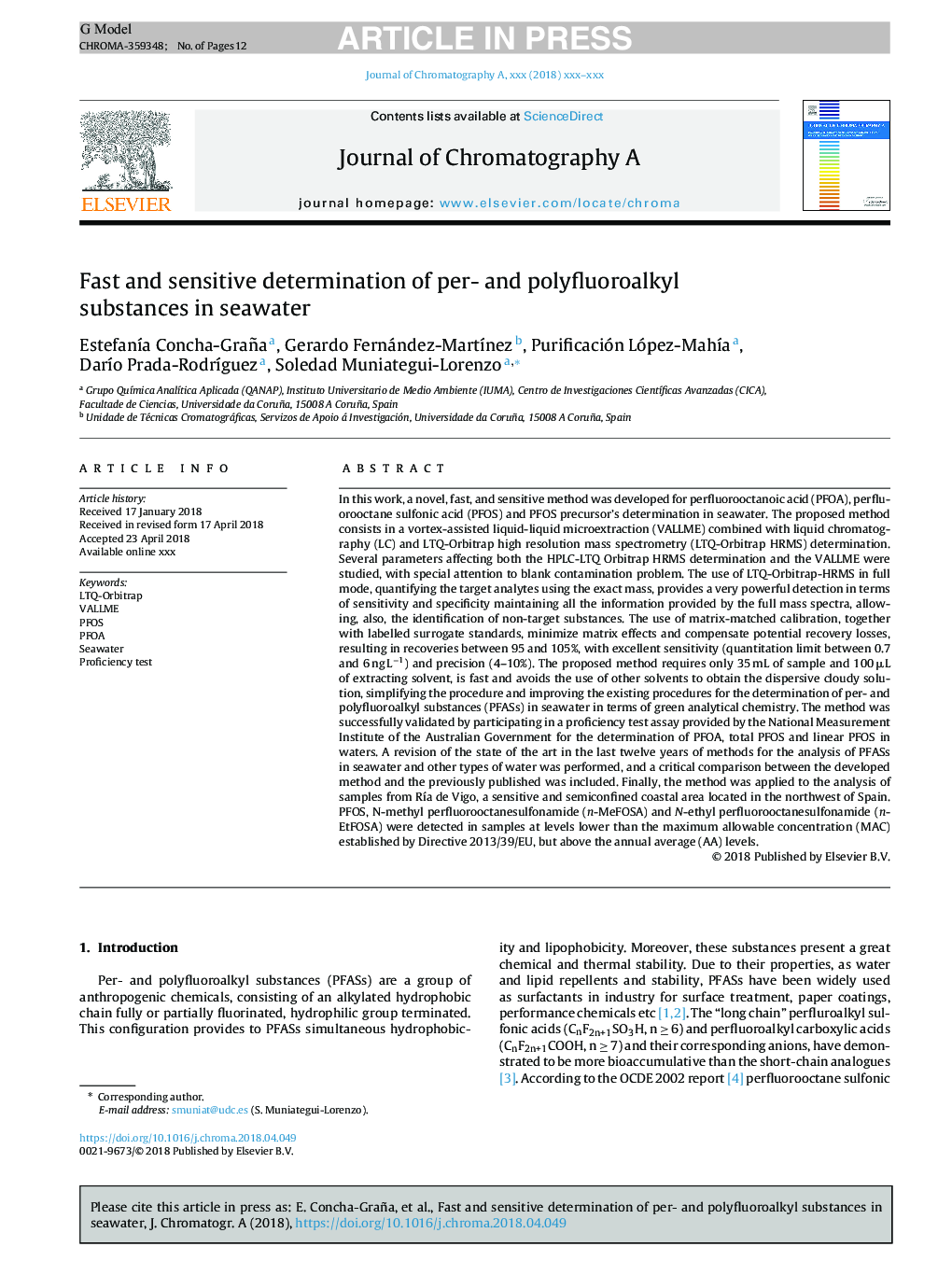| Article ID | Journal | Published Year | Pages | File Type |
|---|---|---|---|---|
| 7608047 | Journal of Chromatography A | 2018 | 12 Pages |
Abstract
In this work, a novel, fast, and sensitive method was developed for perfluorooctanoic acid (PFOA), perfluorooctane sulfonic acid (PFOS) and PFOS precursor's determination in seawater. The proposed method consists in a vortex-assisted liquid-liquid microextraction (VALLME) combined with liquid chromatography (LC) and LTQ-Orbitrap high resolution mass spectrometry (LTQ-Orbitrap HRMS) determination. Several parameters affecting both the HPLC-LTQ Orbitrap HRMS determination and the VALLME were studied, with special attention to blank contamination problem. The use of LTQ-Orbitrap-HRMS in full mode, quantifying the target analytes using the exact mass, provides a very powerful detection in terms of sensitivity and specificity maintaining all the information provided by the full mass spectra, allowing, also, the identification of non-target substances. The use of matrix-matched calibration, together with labelled surrogate standards, minimize matrix effects and compensate potential recovery losses, resulting in recoveries between 95 and 105%, with excellent sensitivity (quantitation limit between 0.7 and 6â¯ngâ¯Lâ1) and precision (4-10%). The proposed method requires only 35â¯mL of sample and 100â¯Î¼L of extracting solvent, is fast and avoids the use of other solvents to obtain the dispersive cloudy solution, simplifying the procedure and improving the existing procedures for the determination of per- and polyfluoroalkyl substances (PFASs) in seawater in terms of green analytical chemistry. The method was successfully validated by participating in a proficiency test assay provided by the National Measurement Institute of the Australian Government for the determination of PFOA, total PFOS and linear PFOS in waters. A revision of the state of the art in the last twelve years of methods for the analysis of PFASs in seawater and other types of water was performed, and a critical comparison between the developed method and the previously published was included. Finally, the method was applied to the analysis of samples from RÃa de Vigo, a sensitive and semiconfined coastal area located in the northwest of Spain. PFOS, N-methyl perfluorooctanesulfonamide (n-MeFOSA) and N-ethyl perfluorooctanesulfonamide (n-EtFOSA) were detected in samples at levels lower than the maximum allowable concentration (MAC) established by Directive 2013/39/EU, but above the annual average (AA) levels.
Related Topics
Physical Sciences and Engineering
Chemistry
Analytical Chemistry
Authors
EstefanÃa Concha-Graña, Gerardo Fernández-MartÃnez, Purificación López-MahÃa, DarÃo Prada-RodrÃguez, Soledad Muniategui-Lorenzo,
